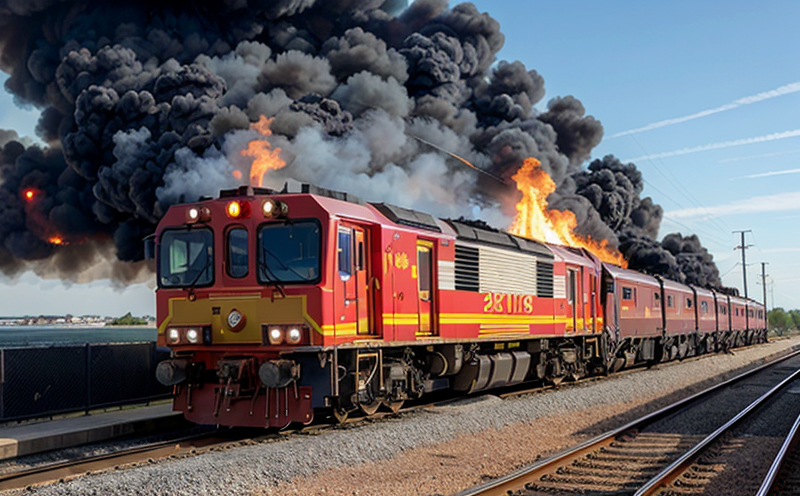Reaction-to-Fire Testing of Railway Insulation Materials
The railway industry is a critical backbone of modern transportation systems, and ensuring the safety and reliability of its components is paramount. Railways are exposed to various environmental factors that can affect material performance over time. One crucial aspect in this regard is fire safety testing, especially for insulation materials used within railway infrastructure.
Fire resistance is not just a matter of compliance with regulations; it is about safeguarding lives and property. The reaction-to-fire (RTF) test evaluates how a material behaves when exposed to flames. This test can predict the potential risk of fire spread, smoke production, heat release rates, and other critical parameters that could impact safety in case of an incident.
In the context of railway insulation materials, the RTF test is essential for several reasons:
- It helps identify materials with low flammability and minimal smoke generation, which are safer to use in enclosed spaces like carriages and tunnels.
- The test ensures that the chosen materials meet stringent international standards such as ISO 13567-2:2019 and ASTM E84/E90 for flame spread index (FSI) and smoke developed index (SDI), respectively.
- It aids in optimizing material composition to enhance fire performance while maintaining other desired properties like durability and cost-effectiveness.
The testing process involves subjecting samples of the insulation materials to controlled conditions that simulate real-world scenarios, such as exposure to flames at specific temperatures and durations. The parameters measured during this test include:
- Maximum heat release rate (MJ/m²/min)
- Smoke production
- Flame spread index (FSI)
- Mass loss
The results of these tests are analyzed to determine the material’s suitability for use in railway applications. This information is invaluable for quality managers, compliance officers, R&D engineers, and procurement teams who rely on accurate testing data to make informed decisions.
In summary, reaction-to-fire testing plays a vital role in enhancing fire safety within the railway sector by providing critical insights into material behavior under fire conditions. By adhering to international standards and using advanced instrumentation, our laboratory ensures reliable and actionable test results for our clients.
Eurolab Advantages
At Eurolab, we pride ourselves on providing top-tier reaction-to-fire testing for railway insulation materials. Our state-of-the-art facilities and experienced technical staff ensure that every test is conducted rigorously and meets the highest standards.
- Expertise: Our team of experts has extensive experience in conducting RTF tests, ensuring accurate results and reliable data.
- Accreditation: Eurolab is ISO/IEC 17025:2017 accredited, guaranteeing the quality and reliability of our testing services.
- Comprehensive Services: We offer a wide range of related services, including material characterization, thermal analysis, and mechanical testing.
- Timely Delivery: Our commitment to efficiency ensures that you receive your test results promptly, enabling timely decision-making.
We are dedicated to helping our clients navigate the complexities of fire safety regulations and standards. Contact us today to learn more about how Eurolab can assist with your railway insulation material testing needs.
Environmental and Sustainability Contributions
In addition to ensuring fire safety, reaction-to-fire testing also plays a role in promoting environmental sustainability within the railway sector. By selecting materials that exhibit low flammability and minimal smoke production, manufacturers can reduce the risk of fires, which are a significant source of air pollution.
The use of sustainable insulation materials not only enhances fire safety but also contributes to reducing carbon footprints by minimizing the need for firefighting efforts and related emissions. Furthermore, materials that meet stringent standards like ISO 13567-2:2019 can contribute to a greener environment by promoting safer, more efficient railway operations.
At Eurolab, we recognize the importance of sustainability in all our testing processes. We are committed to helping clients make informed decisions that balance safety with environmental responsibility.





